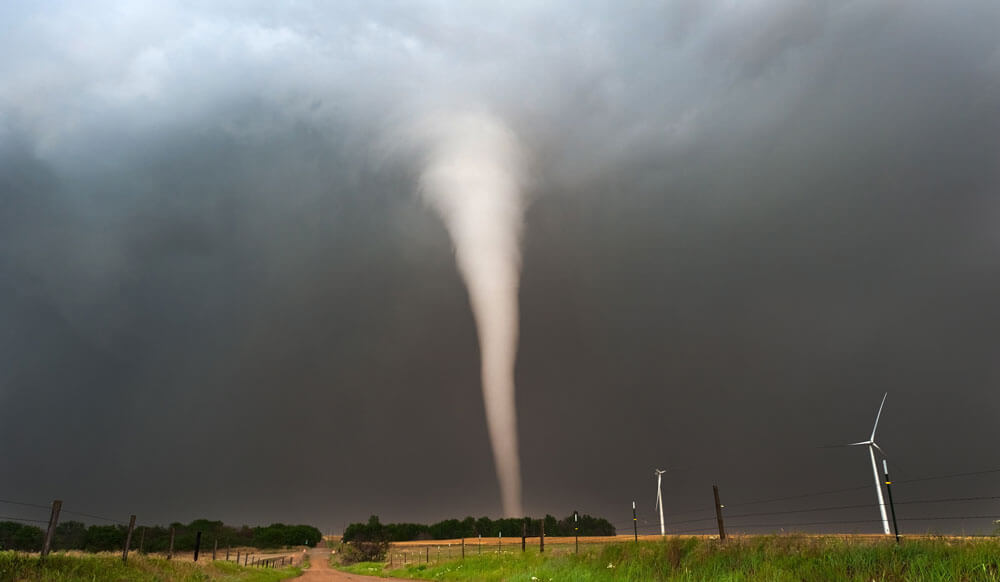Orders Over $100 SHIP FREE START SHOPPING NOW
Error: Contact form not found.
Orders Over $100 SHIP FREE START SHOPPING NOW

While there are many natural events that fall under the “Natural Disaster” category, there are only a handful in particular that are the most common ones you’ll have to prepare for.
1. Hurricanes| Hurricanes are massive weather cyclones that form in the Atlantic, and near the equator in the surrounding area; I.E. Caribbean. Warm water acts as fuel for hurricanes, helping them to form into storms capable of extremely high wind speeds and torrential rain. Hurricanes are rated on scale of intensity from 1-5 and can cause severe damage to your home and community, depending on the storm’s strength. Recently, with Hurricane Harvey in 2017, we’ve seen that these storms can carry wind gusts over 200 mph.
In the event that your area is threatened by a hurricane, always be prepared. Stock up on water, dry food, and health supplies. Purchase a radio and save your phone’s battery, if possible. Put shutters over your windows as objects and debris can become dangerous if thrown around. Also, be sure you have glow sticks, candles, flashlights or any other sources of light in the event you lose power. Make sure you avoid any downed powerlines, and take caution following the events of a hurricane.
2. Tornados | Tornados can be some of the most violent natural disasters because of their unpredictability. Condensed funnels of water vapor and air extend to the ground where they can reach winds as extreme as 300 mph. Tornados can easily tear apart one home while leaving another standing without harm. Unlike Hurricanes, Tornados don’t usually give you any time to prepare. They are random, and they strike fast.
If you are under threat of a tornado, take immediate precautionary steps. If you can, be sure to stay clear of all windows and close to the ground while covering your head and neck. If available, go to a basement or storm cellar. In the aftermath of a Tornado, be in contact with your local authorities and have access to the NOAA Weather radio station for more information. Watch out for dangerous debris, power lines, and other issues that could put you in harm’s way, and wear gloves and thick soled shoes during any cleanup.
3. Wildfires | Wildfires can spread fast and furiously through areas leaving you little time to prepare. Unlike hurricanes and tornados, you cannot bunker down in your home if there is a threat of a wildfire nearing your location. Wildfires can start with the smallest spark, usually in the western states, due to increased dryness and droughts. When these fires start they can quickly become life threatening and are often uncontrollable.
In 2018, in California and Colorado, we can see just how aggressive and severe the damage of wildfires can be. Wildfires are dominating some of the nicest areas, causing billions of dollars in damage and causing thousands of people to be displaced. Wildfires can burn everything in their path and leave a trail of destruction. Don’t wait until the last possible second to leave. Create an emergency plan if you live in a susceptible area and know what to do in the event you have to evacuate.
These three natural disasters are some of the most volatile that we get in the western hemisphere. Take action, get prepared, and be ready before it’s too late.